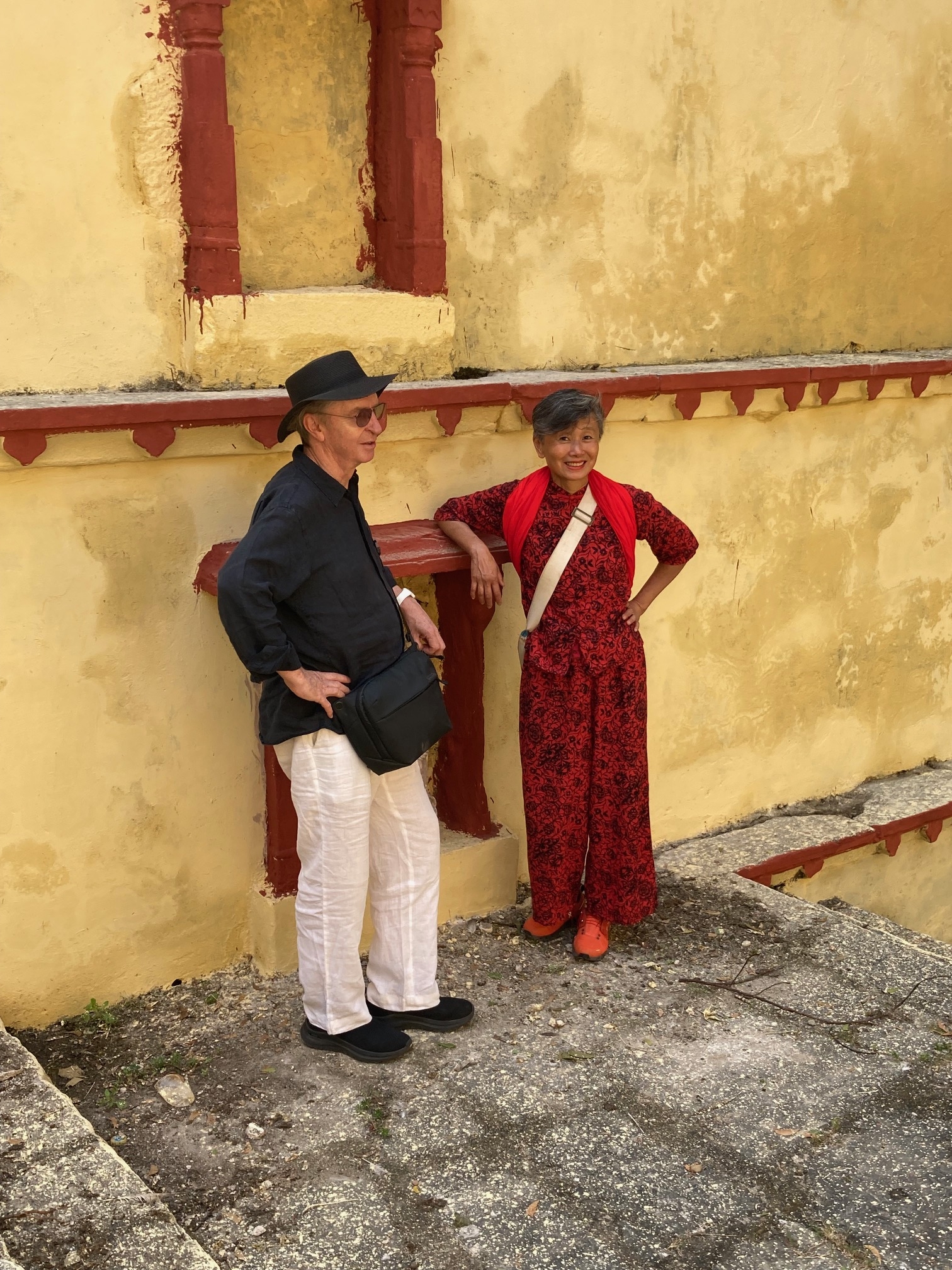<br/-> <br/->
<br/->
Lamu town is on an island in an archipelago just off the Kenyan coast, close to the border with Somalia. There are ruins of mosques and formal tomb structures dating back over a thousand years but Lamu’s heyday was in the eighteenth century when, reportedly, its houses rivalled those of European capitals for sophistication. While Londoners were chucking the contents of their chamber pots out of upper floor windows, Lamu’s waste water was channelled down sealed conduits cleverly carved into the coral stone balustrades of its elegant staircases. Many of these houses still stand; some have been restored, some altered beyond recognition, some are semi-ruined and populated by cats and goats and pawpaw trees, but many continue to be occupied by the families who have lived there for generations.
While the rest of East Africa has undergone extraordinary change and turmoil, Lamu seems to have been left relatively untouched by the twentieth century. British colonials came and went on the mainland but Lamu was too far off the beaten track to bother with. Their only apparent legacy is the District Commissioner’s Land Rover parked incongruously outside the government headquarters on the waterfront – incongruous because there are no roads to drive on.
The centre of the town is densely arranged – with tall stone buildings huddled around a large fort. The main thoroughfare is just wide enough for two handcarts to pass (the island’s only wheeled traffic) and the rest of the streets will only accommodate pedestrians and donkeys. The square in front of the fort is shaded by a large fig tree and just behind the square are separate markets for unrefrigerated fish, meat, fruit and vegetables. There isn’t a supermarket within a hundred miles but you can get most necessities, even alcohol though the island is Islamic, if you know where to look.
There are no reliable plans of the town and so you find your way around by memory or by trial and error, which means you are constantly happening across new and unfamiliar corners. The houses are built around courtyards and the largely blind elevations presented to the street are moderated by recessed porches where benches, on either side of the carved wooden front doors, provide a semi-public space for visitors to wait and for the owners to engage with the life of the town without compromising privacy. Within the house, rooms give onto the open courtyard. Walls are made of coral stone and upper floors and roofs spanned with mangrove poles. The length of a mangrove pole – about 10 feet – thus determines the maximum span and gives a natural discipline to vernacular construction. Large volumes such as mosques are punctuated by columns and beams on a regular three-metre grid. Rooms in houses are up to three bays deep with the inner room, traditionally the ‘harem’, enriched by arrays of delicately carved plaster niches. Over time buildings have been extended upwards to take advantage of views and to catch the wind (the climate is steamy equatorial). Cooking and living spaces are often to be found on the roof under a coconut palm-thatched canopy.
Sleeping up on the roof under a mosquito net is a very particular experience. The tourist brochures will describe the moonlight glinting off the sea, the warm breezes fragrant with jasmine and spices and the gentle rustling of coconut palms. They probably won’t mention the constant acoustic accompaniment of cats fighting and donkeys braying, or the muezzin’s 5am call to prayer.
Once up, you can escape the pressures of town life by walking along the seafront to Shela – once a fishing village but now a sizable settlement populated, in part, by an exotic variety of foreigners. Mercifully the new buildings have generally been spared the inventive attentions of architects and the mangrove pole discipline still applies.
Always an alluring destination, Lamu is ever more popular with adventurous tourists, and for good reason: the empty 10 mile beach, the freshly caught fish cooked in coconut and tamarind sauce, the fine old buildings, the evening passagiata along the seafront, the dhows and the donkeys. But, for me, it is the fact that despite all the newcomers (and their money), Lamu remains essentially the same – its gentle and civilised population largely aloof from the pressures of change from outside. And, whether you are Princess Caroline of Monaco or a local fisherman, there is only one way you can get around the island and that is on your own two feet.
Richard Nightingale founder of Kilburn Nightingale Architects, whose work includes the British High Commission in Kampala, Uganda, and holiday resorts in Mozambique, Pakistan and the Caribbean.
AT217 April 2011 p 72













